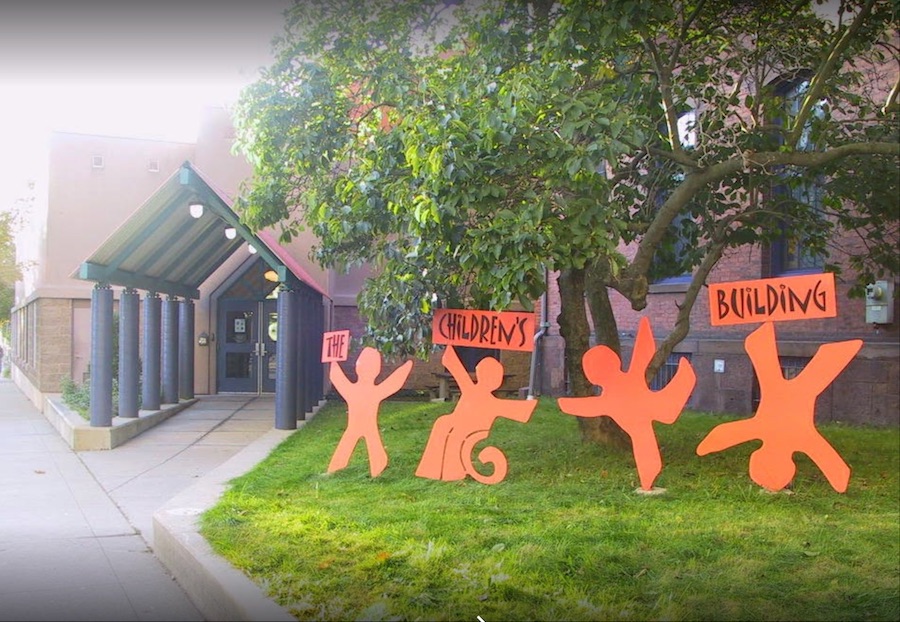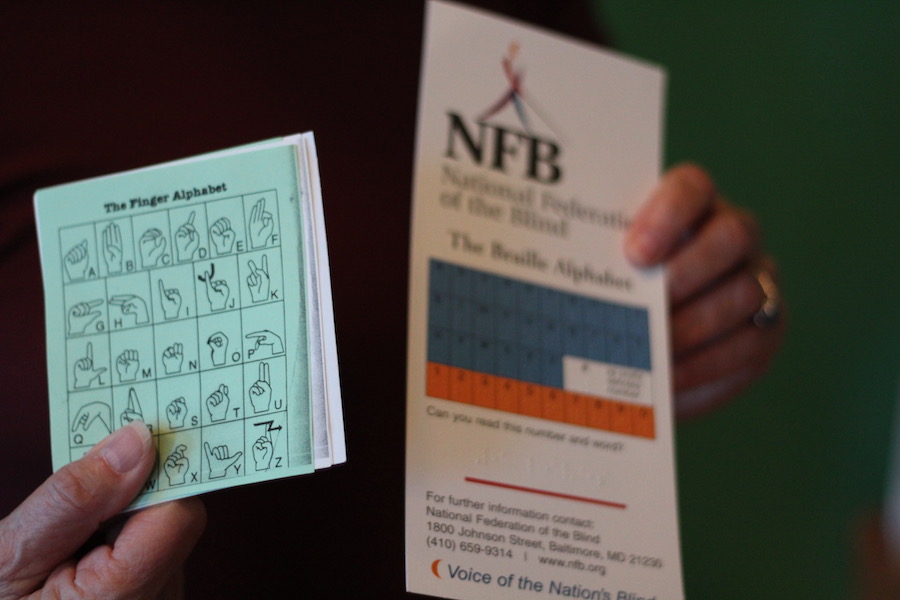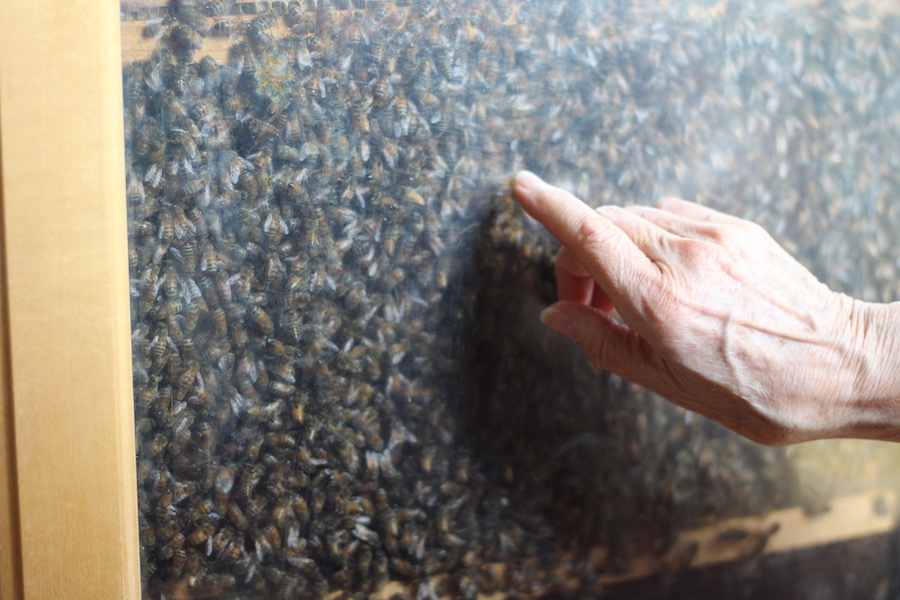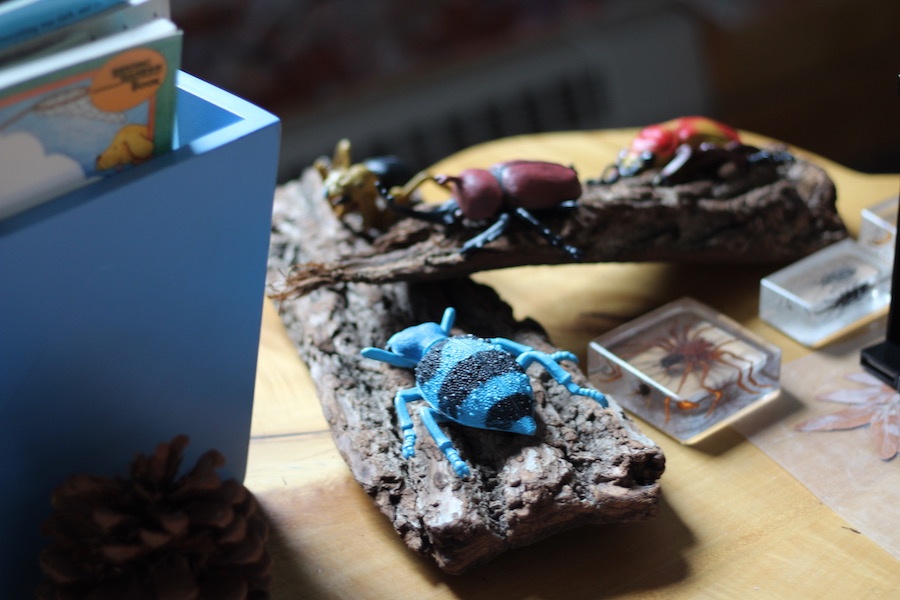
Connecticut Children's Museum | Culture & Community | Downtown | New Haven
 "We can actually have a roof reconstruction without looking for a hole,” said museum director Sandra Malmquist Wednesday.
"We can actually have a roof reconstruction without looking for a hole,” said museum director Sandra Malmquist Wednesday.
 Connecticut Children's Museum Photo.
Connecticut Children's Museum Photo.
Fixes to the leaky roof. New wooden beams on a facade that’s been rotting for years. An air conditioning unit that won’t sputter and spit halfway through the summer. Re-pointed stones for a crumbling foundation, and stucco that isn’t crumbling by the hour.
That’s soon to be the outcome of $1,464,510 in state funding to the Connecticut Children’s Museum, a beacon of early childhood education nestled on Wall Street in downtown New Haven. Wednesday afternoon, the funding passed in a special session of the State Bond Commission. The full two-hour meeting, which allocated a total of $28 million to 11 New Haven institutions, is available here.
Other local recipients include the Cornell Scott Hill Health Center Corporation, the New Haven Parking Authority, and several New Haven Public Schools in need of new technology and repairs to old infrastructure. The museum, built as a mansion in 1860, falls into a similar category of infrastructural need.
In an interview Wednesday at the museum, Director Sandra Malmquist said she is thrilled for the funding, which she expects to be transformative for the 15,000 square foot space. With the funds, the museum will be making exterior renovations to the stone and stucco walls and facade, installing a repaired and repainted metal entrance canopy, repairing leaky windows and a leaky roof, and installing new air conditioning for the building. Malmquist said the repairs will prioritize energy-efficiency, turning the 19th century structure into a far more “green” building.
 Inside, the museum has dedicated itself to accessibility. In addition to bilingual labels, attendees can find guides to braille and American Sign Language.
Inside, the museum has dedicated itself to accessibility. In addition to bilingual labels, attendees can find guides to braille and American Sign Language.
“I lie awake at night thinking about it [the funding],” she said, surrounded by books and papers in her office. “Wow! Out pops 50 things we could do. We can actually have a roof reconstruction without looking for a hole.”
“We sink a lot of money into the building every year,” she added. She said she expects the repairs to bring down the overall cost of maintaining the building. Currently, its annual operating budget is close to one million dollars, with two full-time staff members and eight assistants for the organization’s early childhood program.
Currently, the museum houses multiple programs for early childhood development and education, including a childcare center (daycare activities extend to outdoors, on the Orange Street side of the building), arts and language-based literacy initiatives, and an early childhood resource center with 35 professional development workshops each year. With the New Haven Early Childhood Council, it hosts the “Week of the Young Child – The Little Read” each year in April, providing community partners with a children’s book and project-based literacy activities. This year, the museum used Giuliano Ferri's Brick By Brick to focus on breaking down walls, and building bridges with the same stones.

Inside the building, brightly decorated project rooms are based on the educational theory of multiple intelligences—that children should not just focus on language and math, but on the literary, musical, spatial, physical, interpersonal and natural worlds they inhabit. In one room, attendees find themselves inside Goodnight Moon, surrounded by the great green room’s telephone, bears on chairs, kittens and mittens, and little toy house with a young mouse. From the shelves, books wink out in multiple languages, with visual aids and tutorials in braille and American Sign Language for children who may be blind, deaf or visually impaired.
In another “Natural Room” next door, live bees climb over each other in a thin closed case, immersed in their chaotic ballet to preserve the hive. Elsewhere in the room, an artist has constructed smooth, large honeycombs out of wood in which bee costumes await, so that attendees can get an idea of what it might be like to live as a bee. On a table composed of a tree ring, large stuffed and plastic insects scale branches, and a wood tic-tac-toe board sits waiting for players. A mural spreads out on the wall behind them, foliage bright as a painted tree comes to life.
“We wanted the museum to be the most fun for children,” said Malmquist. “All this money—it really makes the building more attractive for what’s going to come.”

The funding has been a long time coming. Malmquist first applied to the State Bond Commission in 2012, working with architect Peggy Rubens-Duhl and Babbage Construction to make an itemized, detailed report of repairs. Both Rubens-Duhl and Babbage knew the 19th century building well: they had worked on an initial project in 1999, when the Creating Kids Childcare Center first moved into and partially renovated the building. That project reopened to the public in early 2001, with 8,300 square feet of new exhibition space decorated by 14 local artists and packed with learning materials in different languages and media.
Because the initial request was completed in 2012, Malmquist said the team will have to reevaluate the budget before embarking on repairs. She said she does not expect the museum to have to close during renovations—all of the planned repairs are exterior—but is eyeing two weeks in December when the museum is typically closed for large projects like the air conditioning and roof.
In a press release Wednesday, State Senate President Pro Tempore Martin Looney also voiced his support for the project. Malmquist said that he has been writing thank-you notes to the educators, parents, and general supporters of the museum who wrote in with testimonies before the special session and vote.
“The Children’s Museum not only provides quality childcare, but also a variety of programs that are both educational and enriching,” he said. “This funding will allow the museum to update and improve its facility to better serve the children of our community by making it more accessible, more energy-efficient, and generally more up-to-date.”

